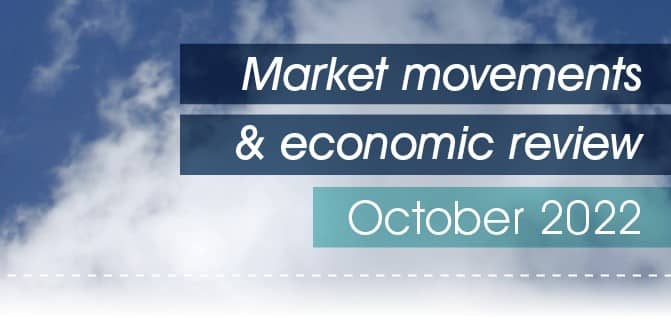Australian shares are popular investments with self-funded retirees and anyone who depends on income from their investments, due in part to the favourable tax treatment of franked dividends.
After falling off in the early days of the COVID pandemic, share prices and dividends bounced back strongly in the year to June 2021.
Investors who depend on income from their shares also have more certainty now that the Labor Party has dropped its opposition to cash refunds of excess franking credits, a policy that attracted fierce resistance from retirees at the last federal election.
The hunt for yield
In a low-interest rate environment, dividend yields on Australian shares compare favourably with near-zero interest rates on bank term deposits and historically low yields on government bonds.
Over the past 40 years, the dividend yield on Australian shares has averaged just over four percent and many stocks pay more, (dividend yield is the sum of dividends over the past 12 months divided by the current share price). In fact, dividends account for roughly half the total return from Australian shares over the past 20 years.i
These dividend yields are even more attractive when the tax benefits of franking credits are included, especially for investors in retirement phase.
https://www.marketindex.com.au/statistics
What are franking credits?
Franking credits represent tax a company has already paid in Australia on any profits it distributes to shareholders by way of dividends. The company tax rate in Australia is currently 30%, or 25% for companies with turnover of less than $50 million.
Shareholders can then use these franking credits, also known as imputation credits, to offset their tax liability on other income, including salary, at the end of the financial year. People who pay no tax, such as investors in retirement phase, can claim a full tax refund from the ATO.
If your marginal tax rate is less than the company tax rate of 30%, you may be eligible to receive a refund of the difference between the franking credit and your tax payable.
This is one reason SMSFs are so attracted to shares in Australian companies that pay fully franked dividends. Super funds pay a top income tax rate of 15% and no tax on the earnings or income of investments supporting a retirement pension.
Am I eligible for a tax refund?
You may be eligible for a refund of excess franking credits if all the following apply:
-
- You receive franked dividends on or after 1 July 2000 either directly or through a trust or partnership
-
- Your basic tax liability is less than your franking credits, after taking into account any other tax offsets you are entitled to.
-
- You meet the ATO’s anti-avoidance rules, designed to ensure everyone pays their fair share of tax (see the 45-day rule below).
You will also need to keep dividend statements from companies that paid franked dividends to support your claims.
The 45-day rule
Where tax is concerned, there are always rules and franked dividends are no exception. To guard against tax avoidance, the ATO imposes a holding period rule, popularly known as the 45-day rule.
To be eligible for franking credits you must:
-
- Hold your shares for a minimum of 45 days, excluding the days of purchase and sale
-
- Purchase the shares before the ex-dividend date
-
- Be holding the shares on the ex-dividend date, although you can sell on this date.
The ex-dividend date is the first day a stock trades without the value of the next dividend payment. You can find the ex-dividend and record dates for a stock on the company’s website.
The 45-day rule doesn’t apply if you are an individual taxpayer and the total franking credits being claimed are less than $5,000 for the financial year.
So how does franking work?
Franking credits have different impacts depending on your marginal tax rate and whether your share investments are held inside or outside super.
Say you own shares in a company which pays a fully franked dividend of $700. Your dividend statement says there is a franking credit of $300, which represents tax the company has already paid. This means the dividend before company tax was deducted would have been $1,000 ($700 + $300).
In your annual tax return, you must declare the full $1,000 in your taxable income. The after-tax value of the dividend will then depend on your marginal tax rate.
Let’s consider the outcome for four scenarios, depending on whether you own shares in an SMSF in pension phase (with no tax) or accumulation phase (with 15% tax); or outside super in your own name at the personal rate of 32.5 % or 45 percent (excluding the Medicare Levy of two %).
| SMSF pension | SMSF accumulation | Own name 32.5% tax | Own name 45% tax | |
| Dividends paid | $700 | $700 | $700 | $700 |
| Franking credits | $300 | $300 | $300 | $300 |
| Taxable Income | $1,000 | $1,000 | $1,000 | $1,000 |
| Marginal tax rate | 0% | 15% | 32.5% | 45% |
| Gross tax payable | $0 | $150 | $325 | $450 |
| Tax payable (Refund) after deducting franking credit | ($300) | ($150) | $25 | $150 |
If you hold the shares in an SMSF tax-free pension account, you will receive a total dividend payment of $1,000 ($700 dividend plus a full cash refund of the attached franking credits).
If you hold the shares in an SMSF accumulation account (with a 15% tax), you will receive $850 ($700 dividend plus a $150 cash refund of franking credits).
If you hold the shares in your own name there will be some tax to pay on your dividend income, but significantly less than you would otherwise have paid without franking credits.
If you would like to discuss the taxation of share dividends and the role they play in your overall investment strategy, please give us a call.





































































